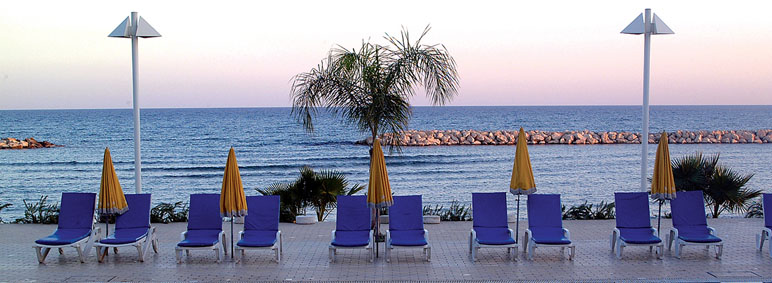Larnaca Taxis pride ourselves on a professional taxi and transfer service and use only top quality vehicles. Your taxi journeys and experiences in Cyprus are part of your holiday and we want to ensure you enjoy your time.
Don’t pay anything on-line. You pay the driver at your destination. We monitor your flight and will be at the airport for you on your arrival, without any extra charges for delays. Having passed through customs, passengers will be welcomed by the driver with a name card.
Please contact us at any time to assist in planning your taxi trips and transfers in Cyprus.
Larnaca International Airport is an international airport located 4 km (2.5 mi) southwest of Larnaca, Cyprus. Larnaca International Airport is Cyprus' main international gateway and the larger of the country's two commercial airports, the other being Paphos International Airport on the island's southwestern coast.
Larnaca Taxis is located close to Larnaca Airport and operated all over the beautiful island of Cyprus.

The middle of summer (July and August) is usually hot, with an average coastal temperature of around 33 larnaca airport cheap taxis °C (91 °F) during the day and around 23 °C (73 °F) at night. In the centre of the island – the highlands – the average temperature exceeds 35 °C (95 °F)) while between June and September on the coast the average temperature is usually around 30 °C (86 °F) during the day and around 20 °C (68 °F) at night. While large temperature fluctuations are rare on the coast, the centre of Cyprus has more variations – typically colder winters and hotter summers.
Temperature of the sea - The average annual temperature of the sea around Cyprus is 21–22 °C (70–72 °F), from 17 °C (63 °F) in February to 27–28 °C (81–82 °F) in August (depending on the location). In the seven months from May to November the average sea temperature vip taxi service from larnaca airport exceeds 20 °C (68 °F).
Sunshine - Cyprus receives an average of 2,700 to 3,500 hours per year. In winter, Cyprus receives an average of 5-6 hours of sunlight per day, half of the 12-13 hours experienced at the height of summer. This is about double that of cities in the larnaca taxi services northern half of Europe; for comparison, London has 1,461 hours. However, in winter there can be larnaca airport taxi services more than four times more sunshine; for comparison, London has 37 hours while coastal locations in Cyprus have around 180 hours of sunshine in December (that is, as much as in May in larnaca airport taxi services London).
Precipitation - The higher mountain areas are cooler and moister than the rest of the island. They receive the heaviest annual rainfall, which may be as much as 1,000 millimetres (39.4 in). Sharp frost also occurs in the higher districts, which are usually blanketed with snow during the first months of the year. Precipitation increases from 450 millimetres (17.7 in) up the south-western windward slopes to nearly 1,100 millimetres (43.3 in) at the top of the Troodos massif. The narrow ridge of the Kyrenia range, stretching 160 km (99 mi) from west to east along the extreme north of the island produces a relatively small increase in rainfall of around 550 millimetres (21.7 in) along its ridge at an elevation of 1,000 meters (3,281 ft). Plains along the northern coast and in the Karpass Peninsula area average 400 to 450 millimetres (15.7 to 17.7 in) of annual rainfall. The least rainfall occurs in the Mesaoria, with 300 to 400 millimetres (11.8 to 15.7 in) a year. Variability in annual rainfall is characteristic for the island, however, and droughts are frequent and sometimes severe. Statistical analysis of rainfall in Cyprus reveals a decreasing trend of rainfall amounts in the last 30 years. Earthquakes, usually not destructive, occur from time to time.
Rainfall in the warmer months contributes little or nothing to water resources and agriculture. Autumn and winter rainfall, on which agriculture and water supply generally depend, is somewhat variable from year to year.
